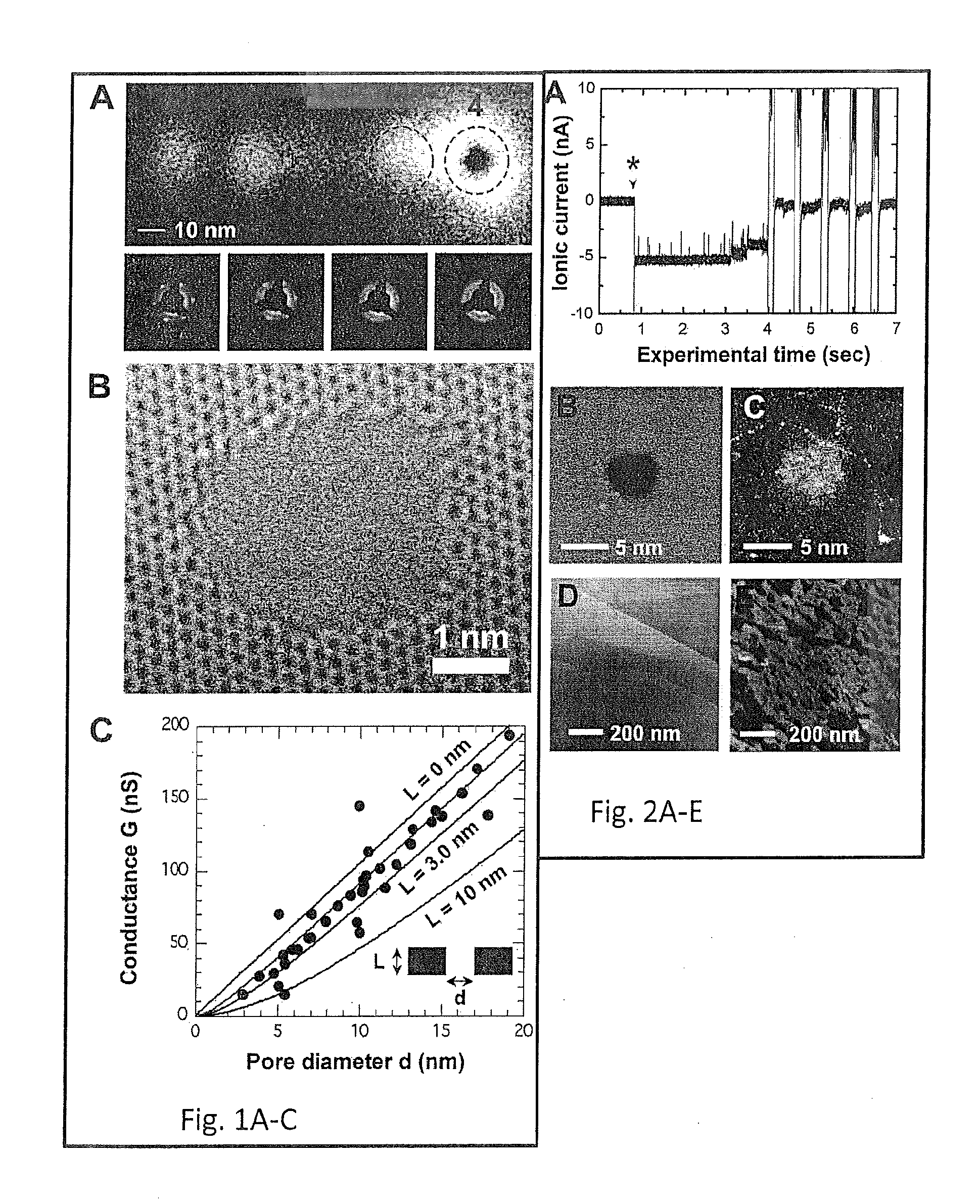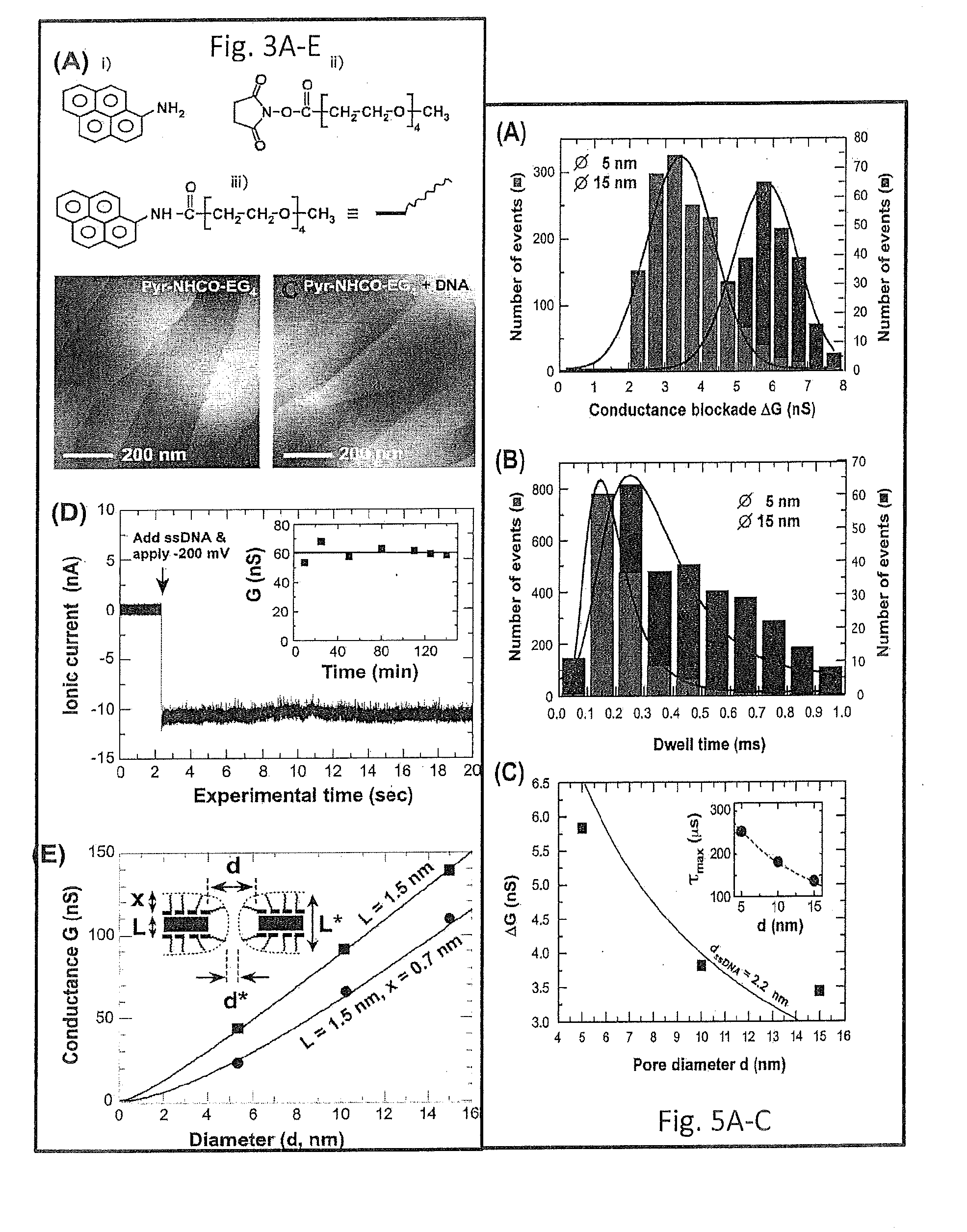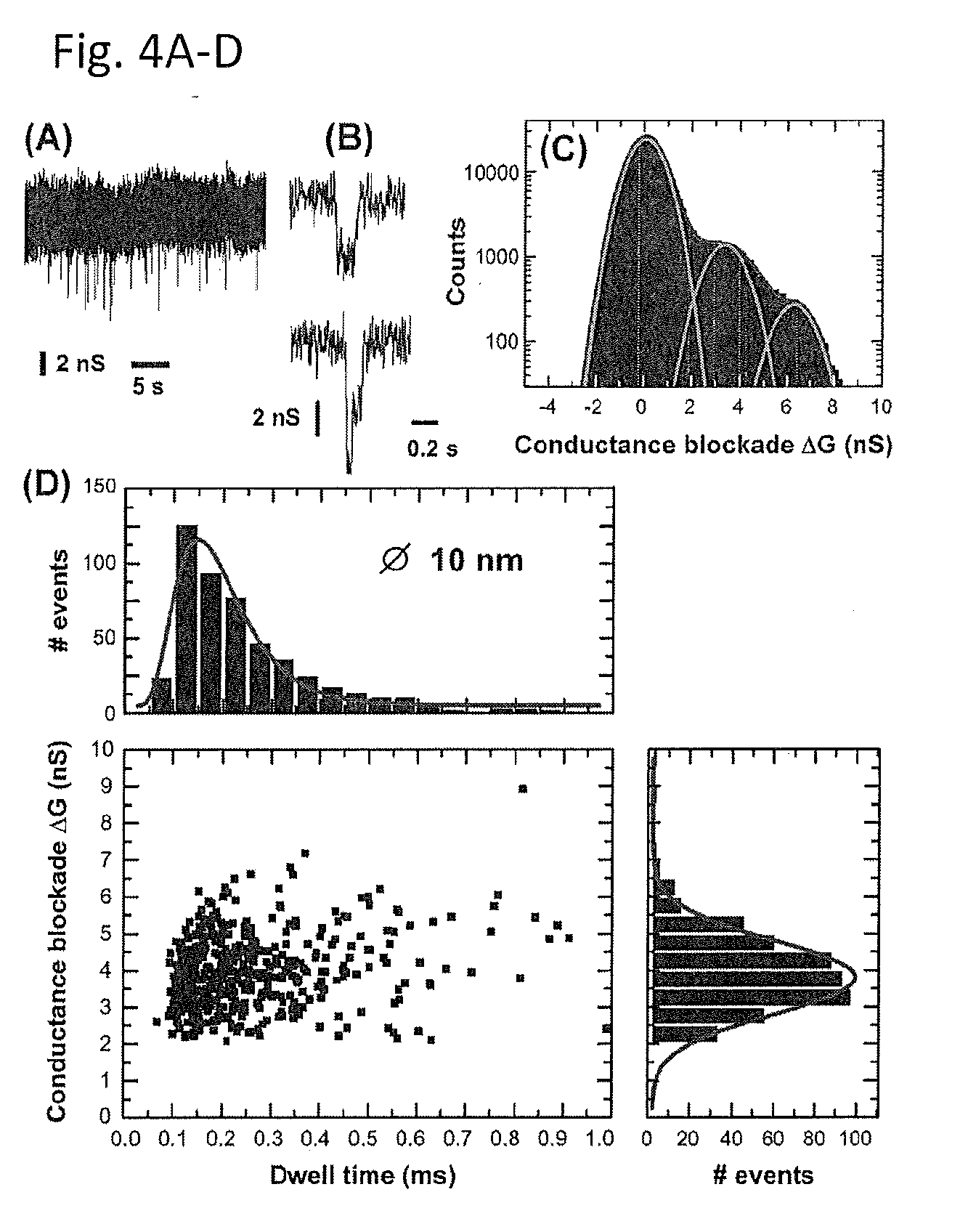Coating of Graphene
a graphene and coating technology, applied in the field of graphene, can solve the problems of limiting the use of monolayers, device characteristics that are not very predictable, and dna translocation of single-stranded and double-stranded dna is in fact much more difficul
- Summary
- Abstract
- Description
- Claims
- Application Information
AI Technical Summary
Benefits of technology
Problems solved by technology
Method used
Image
Examples
examples
[0074]The invention although described in detailed explanatory context may be best understood in conjunction with the accompanying examples and figures.
TABLE S1Numerical solutionsDiameterG afterxxd (nm)coating (nS)(L = 0 nm)(L = 1.5 nm)5.122.10.90 ± 0.010.70 ± 0.0110.265.21.01 ± 0.010.76 ± 0.0114.91091.10 ± 0.020.82 ± 0.02
[0075]It should be appreciated that for commercial application it may be preferable to use one or more variations of the present system, which would similar be to the ones disclosed in the present application and are within the spirit of the invention.
PUM
| Property | Measurement | Unit |
|---|---|---|
| length | aaaaa | aaaaa |
| temperatures | aaaaa | aaaaa |
| diameters | aaaaa | aaaaa |
Abstract
Description
Claims
Application Information
 Login to View More
Login to View More - R&D
- Intellectual Property
- Life Sciences
- Materials
- Tech Scout
- Unparalleled Data Quality
- Higher Quality Content
- 60% Fewer Hallucinations
Browse by: Latest US Patents, China's latest patents, Technical Efficacy Thesaurus, Application Domain, Technology Topic, Popular Technical Reports.
© 2025 PatSnap. All rights reserved.Legal|Privacy policy|Modern Slavery Act Transparency Statement|Sitemap|About US| Contact US: help@patsnap.com



